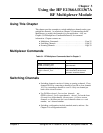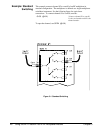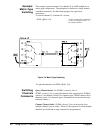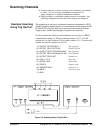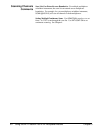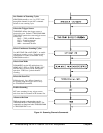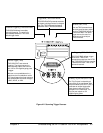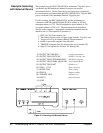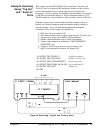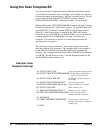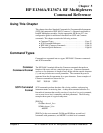
Chapter 4
Understanding the HP E1366A/E1367A
RF Multiplexers
Using This Chapter
This chapter explains techniques to scan RF multiplexer channels and
shows how to use the Scan Complete bit. The chapter contents are:
• Scanning Channels Commands . . . . . . . . . . . . . . . . . . . . . . Page 31
• Using Scanning Trigger Sources . . . . . . . . . . . . . . . . . . . . . Page 31
• Scanning with External Instruments. . . . . . . . . . . . . . . . . . . Page 31
• Using the Scan Complete Bit . . . . . . . . . . . . . . . . . . . . . . . . Page 36
Scanning Channels Commands
Scanning RF multiplexer channels consists of closing a set of channels, one
at a time. Single scan, multiple (2 to 32767) scans, or continuous scanning
modes are available. See Figure 4-1 for scanning commands.
Using Scanning Trigger Sources
The TRIG:SOUR command specifies the source to advance the scan. You
can use the
TRIG command to advance the scan when TRIG:SOUR BUS or
TRIG:SOUR HOLD is set. The OUTP command can be used to enable the
HP E1300A/E1301A Trig Out or the HP E1405A/E1406A port. Figure 4-2
shows scanning trigger sources.
Scanning with External Instruments
Scanning RF multiplexer channels has the same effect as executing multiple
CLOSe commands. Thus, scanning is useful when the outputs 7f rom a
number of DUTs are to be measured with an instrument. Two examples
using HP BASIC programming language follow.
Chapter 4 Understanding the HP E1366A/E1367A RF Multiplexers 31





